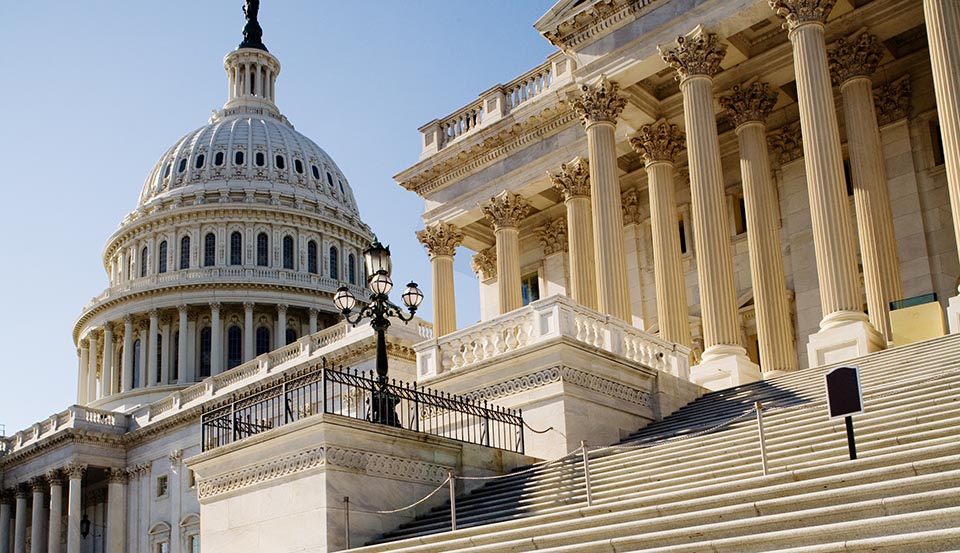AAPL’s Government Relations Committee makes some long-term projections.
AAPL announced its inaugural Government Relations Committee (GRC) earlier this year to
serve as the implementation arm for the association’s advocacy goals. The GRC monitors state and federal legislative activity for potential impacts to private lenders, creates and implements advocacy objectives and provides expert testimony to legislatures.
Private Lender asked members of the GRC to forecast what the private lending industry will look like in several years. Here are their thoughts on how the industry will shape up
5, 10 and 50 years from now.
Cort Chalfant
Nexus Private Capital, Managing Member
GRC Position: Officer
5 years // I think you will see an increase in the number and size of private lenders moving into our space as well as an increase in the “professionalization” of our sector. Existing lenders will look to scale. Emerging lenders will look to carve out niches in local markets they know. The best operators will embrace technology and work to get as efficient as possible.
As the industry proliferates and professionalizes, more institutional capital will enter the space, but placed through existing, top-performing platforms (rather than from direct origination). Lenders who stay disciplined with their underwriting, reporting and back-office operations and who demonstrate the ability to manage a large volume of deal flow will be well-positioned to benefit from institutional capital. Sometime in the next five years, I also expect to see a down market.
10 years // I suspect we will witness a reduction of lending rates by hard money lenders as more institutional capital enters our sector and as operators increase their efficiency. As rates come down, margins will compress, and many small lenders will be driven out of business. Industry consolidation will likely occur through company acquisitions and cannibalization of market share by the most efficient operators that offer the best value proposition for their clients. Our industry will have solidified a rebranding of the business. While there will continue to be predatory niche lenders, the industry will have largely matured and will be recognized as a mainstream option for capitalizing both high- and low-quality deals. Speed and ease of origination will continue to differentiate hard money lenders from more traditional capital sources.
50 years // I can’t take a stab at changes for the private lending industry over the 50-year horizon. There are just too many moving parts—with changing political winds (and therefore the potential for drastic regulatory changes to public and private banking sectors) and technological innovation being two of the greatest wild cards.
Mike Fallot
MM Lending, CEO and Co-Founder
GRC Position: Officer
5 years // Robust private lending industry, with plenty of capital infusion and high demand to meet housing needs.
10 years // Consolidation of private lenders with traditional lenders and title companies to streamline real estate transfer costs and time frames.
50 year // Private lending used to fund housing innovation to meet massive housing needs.
Matt Gunter
RCN Capital, Assistant General Counsel
GRC Position: Legal Chair
5 years // Much of the same, probably a bigger push for e-closings or e-notary
10 years // Again, not much change, probably much wider availability of e-recording
50 years // Several coastal cities now underwater, lending in bitcoin, mortgages
on the moon
Lloyd Levin
Specialty Lending Group, Consultant
GRC Position: Officer
5 years // Another recession (not as severe as the last). I also fear that if too much of the regulatory climate that was put in place five to eight years ago is trashed and if the mortgage industry (including us) is again saddled with a share of the blame for the next recession, private lenders will be in danger of extinction. In a “reasonably regulated” lending atmosphere, the private lending industry will continue to thrive and continue to outperform the banking industry.
10 years // Artificial intelligence may take over as to almost automate lending. If this happens, the kind of decision-making and risk-taking that gives private lenders an edge (speed and flexibility) may be substantially eroded by the banking industry. We are successful because we connect with our clients, “know our territory,” and only when our clients are successful are we successful.
50 years // I am going to pass on predicting anything 50 years out—I just hope this country and this planet still exist!
Melissa Martorella
Geraci Law Firm LLP, Transactional Associate
GRC Position: Ex Officio
5 years // On the other side of a market correction, higher returns and fewer players in popular markets
10 years // Compression in major markets again, new secondary and tertiary markets opening unexpectedly, more foreign investment in the U.S. real estate market
50 years // AAPL launches IAPL (the International Association of Private Lenders) with its annual conference in Monaco
Ted Parker
Millennium Trust, Senior Vice President
GRC Position: Officer
5, 10 and 50 years // I believe private lending will continue to grow beyond the fix and flip lending we are seeing today.
Chris Ragland
Noble Capital, Chief Operating Officer
GRC Position: First Chair
5 years // Significant consolidation between capital providers and originators, creative work-out solutions for REO portfolios as private lenders begin to fail during a recession, increased regulation by state authorities in the private lender space leading to massive visibility and maturation.
10 years // The private lending industry is now a distinct, regulated and efficient part of the overall mortgage industry.
50 years // Lending is so passé… the world is unified under a hegemony for the betterment of mankind, and we all serve our artificial intelligence overlords. Who can predict that far into the future without writing a fiction novel?
John Tedesco
Appraisal Nation, Senior Vice President
GRC Position: Officer
5 years // Private lending has grown to nearly 10% of lending in America. I see increased regulatory pressures and private lenders driving innovations in lending platforms, products and tools. We will see roll-outs of more mobile application apps and servicer apps and more conventional lenders entering the space.
10 years // A larger number of conventional lenders and investors active in the space, along with a broader number of crowd-sharing investment platforms. There will be a continued rate compression that will drive competition between conventional lenders and private lenders. Most applications will be on mobile apps and most servicers will be in real time with direct interface (think Uber of Appraisals).
50 years // Most conventional lenders will have a private lending arm or division; all mobile-based apps for property analysis, investment and services (title, appraisal inspection); digital fingerprints and eye scans replace document signatures; appraisals/valuations are done by drones with built-in computer algorithms sending real time data; and common use of alternative currency such as bitcoins and others for down payments and lending.












Leave A Comment